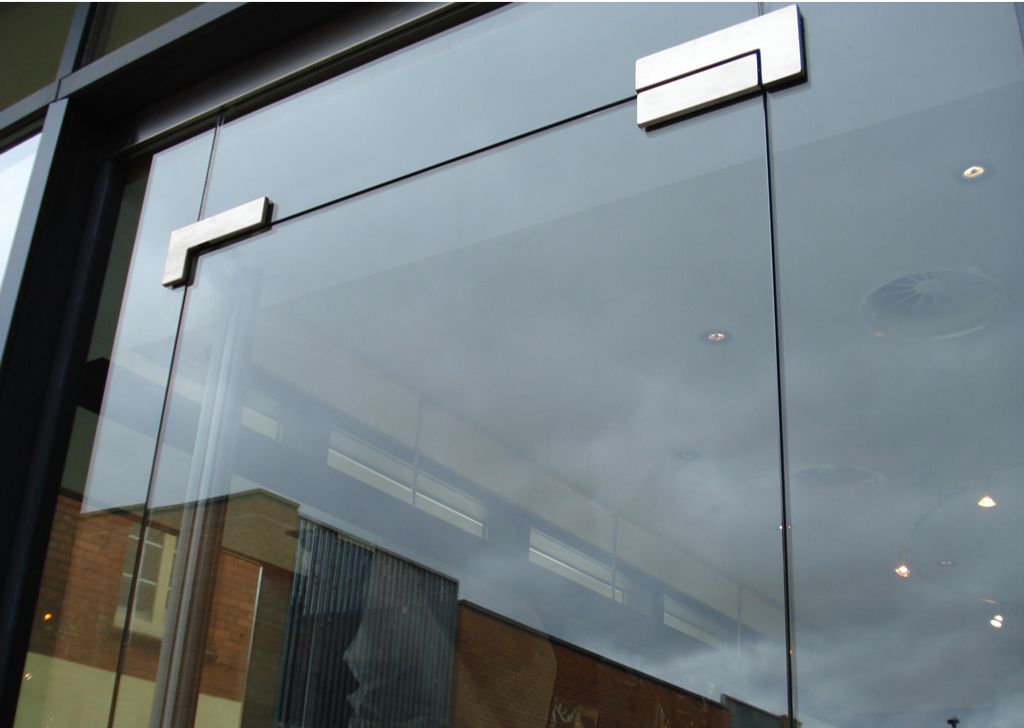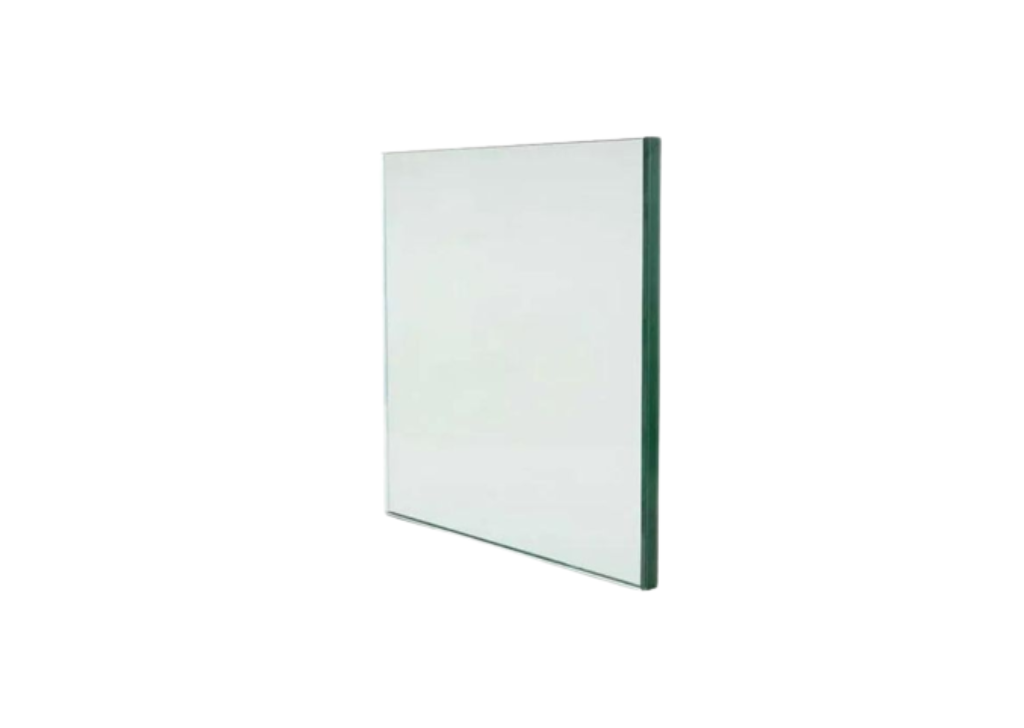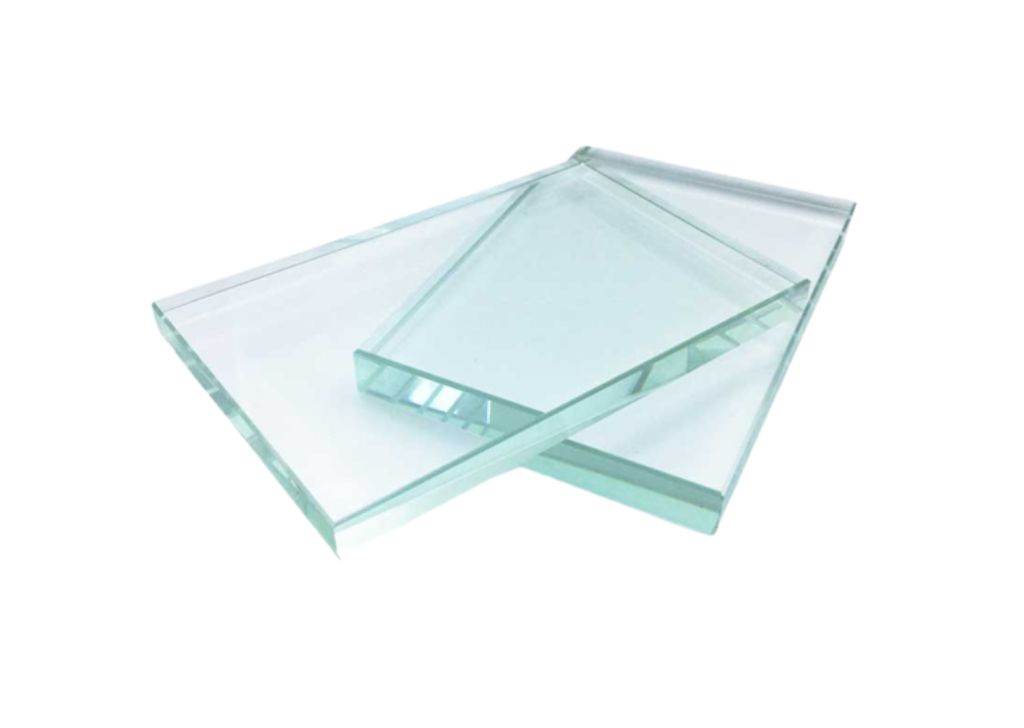
Glass has become an integral part of our modern world, revolutionizing various industries and transforming our daily lives. Among its many forms, tempered glass shines as a material with extraordinary promise. Offering an exceptional combination of strength, durability, and versatility, tempered glass has captured the attention of architects, engineers, and designers across the globe. In this article, we’ll delve into the details of tempered glass, exploring its unique properties, manufacturing process, applications, and the incredible potential it holds for the future.
Difference Between Tempered Glass and Toughened Glass
When it comes to choosing the right type of glass for different applications, the terms “tempered glass” and “toughened glass” are often used interchangeably. However, despite their similarities, these two types of glass have distinct characteristics and are designed for specific purposes. In this article, we will delve into the differences between tempered glass and toughened glass, exploring their uses, properties, and even price considerations.
The Basics of Tempered Glass

What is tempered glass and its unique properties ?
Well, you may ask what is tempered glass? Tempered glass, also known as toughened glass, is a type of safety glass that undergoes a special heat treatment process to increase its strength. This transformation occurs by subjecting the glass to extreme temperatures, followed by rapid cooling, which forms internal compressive stress. As a result, tempered glass is four to five times stronger than regular annealed glass, making it highly resistant to breakage.
The manufacturing process of tempered glass
The production of tempered glass involves a multi-step process that unleashes its exceptional properties. Firstly, the glass is heated to extremely high temperatures, typically around 600 degrees Celsius (1112 degrees Fahrenheit). Then, it undergoes rapid cooling, achieved through blasts of cool air or jets of cold liquid. This rapid cooling creates a compressive stress on the outer surfaces of the glass while maintaining higher tension in its core. As a result, tempered glass attains impressive strength and resilience.
Common applications of tempered glass use in everyday life
Tempered glass uses comes in our daily lives, eliminating the vulnerabilities of regular glass. From windows and doors to shower enclosures and kitchen appliances, tempered glass ensures safety and durability. Its application extends to various industries, including construction, automotive, and electronics, making it an indispensable material in our modern world.
What is tempered glass when it comes to Strength and Durability

The unparalleled strength of tempered glass
Tempered glass stands head and shoulders above regular glass in terms of strength and resistance to breakage. It is designed to withstand tremendous impact without shattering, making it ideal for use in critical situations. Whether it’s high winds, accidental impacts, or extreme temperatures, tempered glass retains its structural integrity and offers unmatched durability.
Resistance to impact and breakage
With its unique manufacturing process, tempered glass exhibits remarkable resistance to impact and breakage. While regular glass may succumb to external forces, tempered glass can absorb significant amounts of energy before succumbing to fracture. This property makes it the go-to choice for industries requiring safety and reliability, such as construction and automotive.
Enhanced safety for high-risk environments
Tempered glass takes safety to a whole new level. When it does break, tempered glass shatters into small, harmless pieces, scattered across the ground. This controlled breakage pattern significantly reduces the risk of serious injuries that can result from the sharp shards of regular glass. Its unrivalled safety features make it an essential component in buildings, vehicles, and countless other applications where human well-being is the top priority.
Durability beyond expectations
Aside from its outstanding strength, tempered glass offers remarkable durability that surpasses that of regular glass. Its resistance to scratches and abrasions ensures long-lasting clarity and functionality. Moreover, it exhibits excellent resilience to various weather conditions, including extreme temperatures, making it suitable for both interior and exterior applications. Compared to regular glass, tempered glass boasts an extended lifespan, minimizing the need for frequent replacements and contributing to cost savings.
Versatility Redefined: Endless Possibilities
Tempered glass’s versatility knows no bounds, as it plays a crucial role in redefining architectural and design possibilities. With its unique features and ability to withstand demanding conditions, tempered glass continues to empower innovative and creative solutions across industries.
Architectural marvels empowered by tempered glass
What is tempered glass opening the door to mesmerizing structural innovations? In architecture, its strength and safety features enable the creation of expansive glass facades, offering a seamless connection between indoor and outdoor spaces. From skyscrapers to iconic landmarks, tempered glass provides architects with limitless design possibilities while ensuring the utmost safety for inhabitants.
Energy-efficient solutions with smart glass
The advent of smart glass has further enhanced the versatility of tempered glass. By incorporating advanced technologies, smart glass enables the transformation of windows and facades into dynamic elements that adapt to changing environmental conditions. Through the use of sensors and control systems, smart glass can adjust its transparency, reducing heat gain and enhancing energy efficiency in buildings. This revolution in glass technology has the potential to create greener and more sustainable urban environments.
Automotive industry advancements
The automotive industry has also witnessed significant advancements fuelled by tempered glass. With its remarkable strength and safety features, tempered glass is now a key component in car design. It provides structural integrity, enhances the vehicle’s overall strength, and guarantees passenger safety. Additionally, the use of tempered glass allows for the incorporation of sleek panoramic roofs, giving drivers and passengers an unparalleled view of the world.
Ultramodern features powered by tempered glass
Tempered glass’s versatility extends to the realm of electronics and technology, where it continues to push boundaries. From smartphones to tablets, tempered glass is used to create sleek, durable screens and touch panels that withstand the rigors of everyday use. Wearable devices, such as smartwatches and fitness trackers, also harness the benefits of tempered glass, ensuring their longevity and resistance to accidental impacts.
Beyond Clarity: Enhanced Visual Experience
Tempered glass offers an optical superiority that enhances our visual experience, whether it’s through crystal-clear transparency or reduced glare and reflection. Moreover, tempered glass allows for creative customization through vibrant options, making it an ideal choice for both functional and aesthetic purposes.
The optical superiority of what is tempered glass
When it comes to transparency, tempered glass excels. Its clarity rivals that of regular glass, offering unobstructed views and an uninterrupted visual experience. Whether used in windows, display cases, or electronic screens, tempered glass ensures that every detail is faithfully transmitted, enhancing our engagement with the world around us.
Reduced glare and reflection
One of the remarkable qualities of tempered glass is its ability to minimize glare and reflection. This property is particularly valuable in environments where sunlight or artificial lighting can create visual disturbances. By reducing glare, tempered glass allows for comfortable viewing and ensures that images and displays remain vibrant and easily readable, even in challenging lighting conditions.
Unleashing creativity with vibrant glass options
Tempered glass takes customization to new heights, offering a broad range of vibrant colours and finishes. Architects, designers, and artists can incorporate these options to create visually stunning and unique spaces. Whether it’s an eye-catching glass sculpture, a dynamic feature wall, or an expressive decorative element, tempered glass allows for endless creative possibilities.
Incorporating decorative patterns and textures
Building upon its customizable nature, tempered glass can be enriched with decorative patterns and textures, further expanding its design potential. From delicate etchings and frosted surfaces to geometric motifs and three-dimensional textures, tempered glass enables the integration of artistry and aesthetics into functional applications. This perfect blend of form and function enhances the visual impact of spaces and objects, captivating the senses and enriching the surrounding environment.
Safety First: Protecting Lives with Tempered Glass
While tempered glass offers unparalleled strength and durability, its commitment to safety takes centre stage. By prioritizing protection and minimizing potential risks, tempered glass secures buildings, vehicles, and various other applications, providing peace of mind to users and inhabitants.
How tempered glass prioritizes safety
Tempered glass is designed with safety as a top priority. When subjected to intense force or impact, tempered glass fractures into small, relatively harmless pieces, thanks to its controlled breakage pattern. This characteristic significantly reduces the chances of severe injury, as there are no sharp edges or dangerous shards to contend with. This unique safety feature makes tempered glass an integral component in structures and products where accidents can have catastrophic consequences.
Prevention of sharp shards
Unlike ordinary glass, which breaks into large, sharp fragments, tempered glass disintegrates into small, granular pieces. These granules are less likely to cause deep cuts or severe injuries, minimizing the potential harm caused by glass breakage. This aspect is especially valuable in environments where human contact with glass is inevitable, such as shower enclosures, glass doors, and partitions.
Securing buildings with tempered glass
In the realm of architecture, tempered glass plays a vital role in securing buildings against various threats. Its strength and impact resistance allow it to withstand high winds, severe weather conditions, and potential forced entry attempts. Additionally, tempered glass demonstrates blast resistance, making it a preferred choice for critical infrastructure, such as government buildings, airports, and secure facilities. By fortifying windows, facades, and other vulnerable areas, tempered glass provides an added layer of protection, safeguarding lives and property.
Environmental & Energy Benefits of Tempered Glass
Tempered glass not only excels in strength and safety but also offers environmental and energy-efficient advantages. From recyclability to energy efficiency in construction and transportation, tempered glass contributes to sustainability efforts while harnessing the power of solar energy for a greener future.
Tempered glass and sustainability
As the world embraces sustainable practices, tempered glass proves to be an eco-friendly choice. One of its significant advantages lies in its recyclability. Tempered glass can be processed and reused to create new glass products, reducing waste and conserving valuable resources. By promoting a circular economy and minimizing the reliance on raw materials, tempered glass plays a crucial role in building a more sustainable future.
Energy efficiency in construction and transportation
Tempered glass complements energy-efficient practices in both the construction and transportation sectors. Its thermal insulation properties help to reduce heat transfer between indoor and outdoor environments, resulting in lower energy consumption for heating and cooling. By incorporating tempered glass into building envelopes and vehicle designs, energy efficiency is improved, allowing for substantial energy savings and a reduced carbon footprint.
Leveraging solar power with tempered glass
In the quest for renewable energy, tempered glass proves to be an invaluable resource. Its transparency and durability make it an ideal material for solar panels, which harness the power of the sun to generate electricity. By integrating tempered glass into solar panel technology, we unlock the potential to produce clean energy on a large scale. Furthermore, tempered glass’s light-transmitting properties facilitate the use of integrated photovoltaics in architectural designs, blending renewable energy generation seamlessly with the built environment.
Challenges and Innovations: Pushing the Boundaries
As with any technological advancement, tempered glass is not without its challenges. However, through relentless innovation and advancements, these obstacles are being addressed, paving the way for a future where tempered glass evolves and expands its capabilities.
Addressing the challenges of manufacturing tempered glass
Manufacturing tempered glass on a large scale presents several challenges. Ensuring uniform thickness and quality across multiple sheets requires precise control over the production process. Overcoming potential distortion and optical effects introduced during the tempering process is another challenge that the industry addresses through rigorous testing and continuous refinement. By addressing these challenges, tempered glass manufacturers strive to maintain consistency and deliver products of exceptional quality.
Advancements and future prospects of tempered glass
The future of tempered glass holds limitless potential. Advancements in nanotechnology promise to enhance the functionalities of tempered glass, pushing its boundaries even further. From self-cleaning properties and anti-glare surfaces to incorporated sensors and interactive capabilities, the possibilities are intriguing. Furthermore, researchers are exploring the development of flexible and bendable glass, which would open up new horizons for architectural and design applications. The journey of tempered glass continues, with innovation leading the way, fueling its evolution and propelling us into a future where glass technology defies conventional limitations.
Toughened Glass Price Considerations
When comparing the price of tempered glass with toughened glass, it’s important to note that both types of glass entail higher costs compared to regular annealed glass. This is primarily due to the additional production steps and specialized treatment involved in their manufacturing processes. However, the actual price may vary depending on factors such as size, thickness, and customizations required for specific applications.
Toughened Glass vs Tempered Glass
While toughened glass vs tempered glass when you compare you may essentially refer to the same product, the terminology can differ depending on geographical location. In general, tempered glass is more commonly used in North America, while toughened glass is the preferred term in Europe and other parts of the world. Irrespective of the nomenclature, both tempered and toughened glass possess similar properties and undergo the same manufacturing processes to achieve the desired strength and safety features.
A Paradigm Shift in Glass Technology
The rise of tempered glass has heralded a paradigm shift in glass technology. By combining strength, durability, and versatility, tempered glass has found its way into multiple industries and daily life. From architectural marvels to automotive advancements, tempered glass empowers creativity, enhances safety, and contributes to sustainability efforts. As we embrace its unprecedented potential, tempered glass becomes a symbol of progress, innovation, and the limitless possibilities that lie ahead.
Frequently Asked Questions
The cost of tempered glass is generally higher than regular glass due to its specialized manufacturing process and enhanced strength properties. However, the exact price difference can vary depending on the specific project, quantity, and region.
While tempered glass is exceptionally resistant to impact and breakage, it is not indestructible. In rare cases, extreme forces or impacts beyond its design limits can cause tempered glass to break. However, tempered glass’s controlled breakage pattern ensures that if it does break, it shatters into small, harmless pieces, minimizing the risk of severe injury.
The mass production of tempered glass involves a combination of automated processes and specialized machinery. Sheets of glass are cut to size, then subjected to a high-temperature heating process before rapid cooling. The entire process is tightly controlled and monitored to ensure consistency and quality.
Yes, tempered glass is recyclable. After being subjected to a crushing process, tempered glass can be processed and reused to create new glass products. By recycling tempered glass, we reduce the demand for raw materials, conserve energy, and minimize waste, contributing to a more sustainable future.
Tempered glass’s exceptional strength, enhanced safety features, and durability make it an ideal choice for architectural projects. Its ability to withstand impact, resist high winds and extreme temperatures, and its controlled breakage pattern make it invaluable for creating safe and visually striking buildings. Additionally, tempered glass’s customizable options and optical superiority further elevate its appeal in architectural design.
While tempered glass offers numerous advantages, it also has some limitations. For instance, once tempered glass is manufactured, it cannot be cut or altered without shattering. Additionally, the manufacturing process may introduce slight distortion or optical effects that can be observed in certain applications. However, these limitations are outweighed by the exceptional benefits and versatility that tempered glass brings to various industries and everyday life.